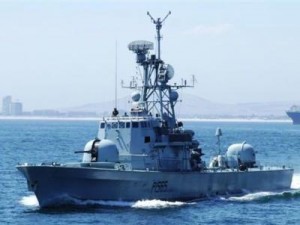2014-08-22 by Kim Helfrich
The status of South Africa’s currently modest shipbuilding industry is set to change with the Department of Trade and Industry (DTI) this week confirming it as one that has been earmarked for local procurement.
“Local procurement requirements set out in the sixth iteration of the Industrial Policy Action Plan (IPAP) and accompanying designations and instruction notes are binding on all government departments at national, provincial and municipal levels and all state entities,” according to a DTI statement.
The maritime arm of service of the SA National Defence Force (SANDF) has already issued, through Armscor, a Request for Proposals (RfP) to replace SAS Protea. Navy Chief Vice Admiral Mosuwa Hlongwane is upbeat that capital acquisition is on track.
“It remains on track for the renewal of both offshore patrol and hydrographic capabilities,” he told defenceWeb soon after taking over command of the Navy from Johannes Mudimu, who is now chairman of Armscor.
“Both projects are in the final acquisition study phases and once completed will give a clearer indication of the capability we will receive and when delivery can be expected,” he said.
The hydrographic capability has moved to the RfP stage with a compulsory bidders’ conference scheduled for next month.

At the same time there are indications that Project Biro is also moving up in priority.
This because it appears conversion of a fourth strikecraft to an offshore patrol vessel (OPV) is not going to happen.
The Navy has taken delivery of three of these vessels with the third – SAS Makhanda – now doing counter-piracy duties in the Mozambique Channel.
The other converted strikecraft now serving as OPVs are SAS Galeshewe and SAS Isaac Dyobha. SAS Adam Kok was slated as the fourth strikecraft to undergo conversion but indications are this will not happen which navy watchers say opens the door for new OPVs. Hlongwane and his predecessor, Mudimu, as well as now retired Chief Director: Maritime Strategy, Bernhard Teuteberg, have all publicly supported local build of the new OPVs.
This ties in with the DTI view of the South Africa boat- and shipbuilding industry.
Minister Rob Davies said the sector had been identified as a strategic industry with “strong and extended linkages for economic growth and employment multipliers”.
“It is critical for South Africa to retain and build its capacity for engineering and technical capabilities to make working vessels to global standards,” he said.
An example of the value of a strong shipbuilding industry comes from the United Kingdom where the Ministry of Defence said more than 800 Scottish jobs have been protected by a multi-million pound contract to build three new OPVs for the Royal Navy.
Announcing the contract Defence Secretary, Michael Fallon, said: “UK warships are only built in UK shipyards. This contract shows our commitment to investing in new ships for the Royal Navy and maintaining in the UK the expertise needed to build the warships of the future. It will benefit the dedicated workers of the Clyde, their families and the local economy in Glasgow.
“This sort of investment by the UK government is vital for the sustainment of shipbuilding in the city and the hundreds of specialist manufacturing and engineering roles that play an important role in providing war fighting capability for the Royal Navy.”
The first new OPV is expected to be handed to the Royal Navy in 2017.
Republished with the permission of our partner defenceWeb:

